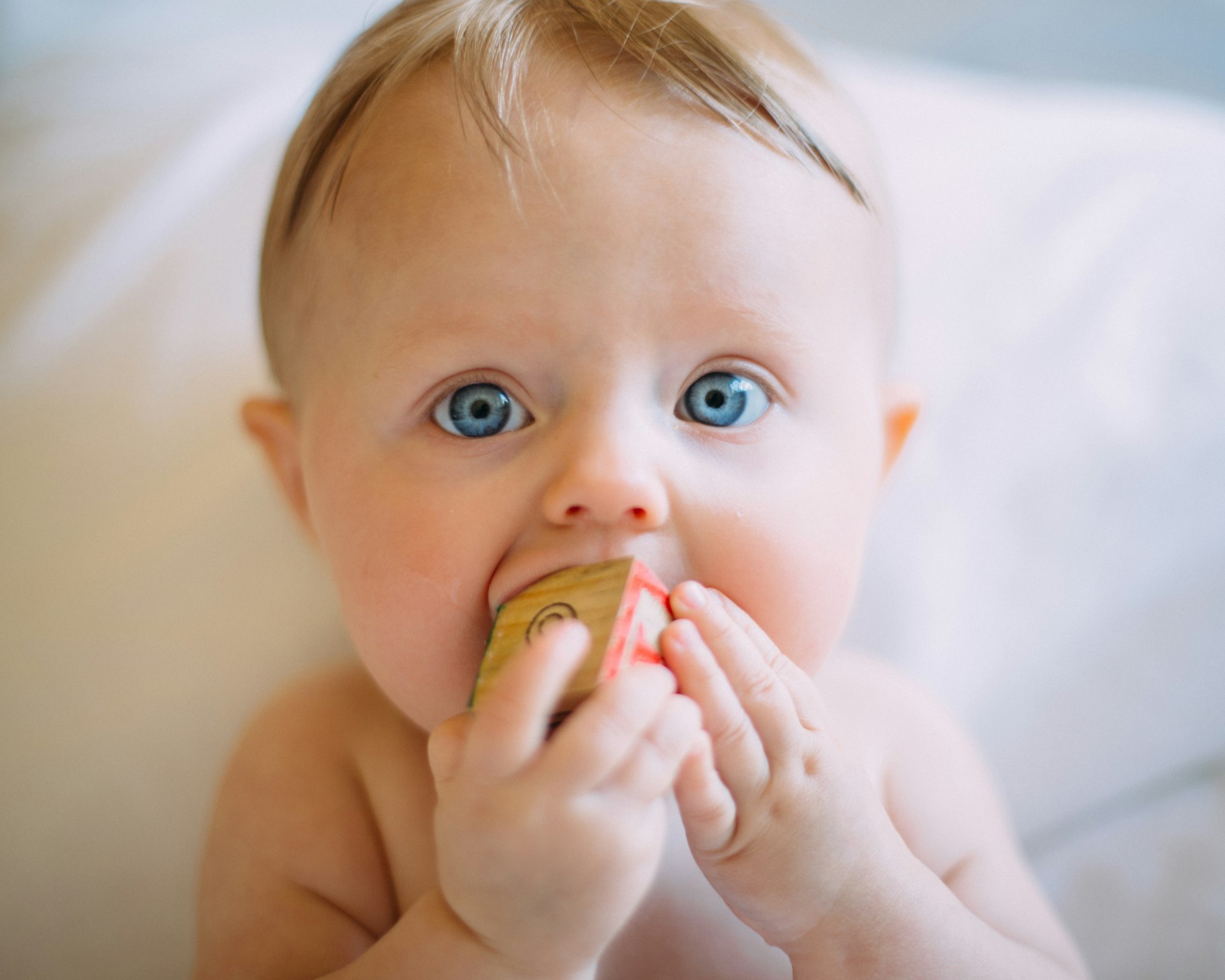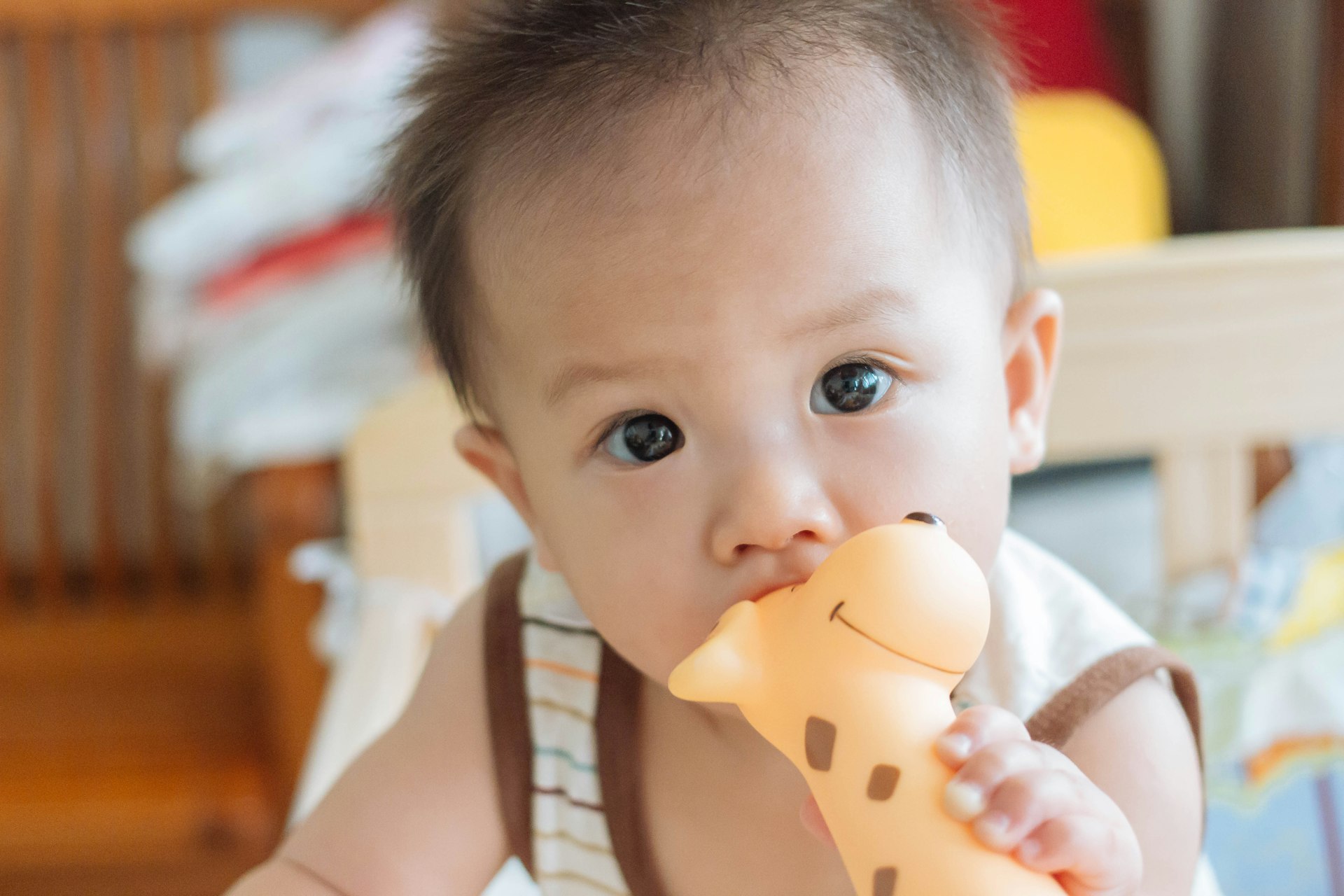The Newborn Stage: A World of Firsts
The first three months of a baby’s life are a beautiful period of quiet wonder and rapid growth. Every blink, wiggle, and coo is part of your baby’s exploration of the world outside the womb. While they may seem small and sleepy, newborns are already taking in their surroundings through their developing senses — especially touch, sound, and sight.
This is where natural wooden rattles and teethers come into play. These seemingly simple toys actually serve as powerful tools that support essential developmental milestones in the earliest phase of life.


Developmental Milestones: 0–3 Months
Here’s what typically happens during this stage:
Visual focus begins – babies can track faces or high-contrast shapes.
Grasp reflex is active – hands curl around your finger or objects.
Hearing sharpens – babies respond to sounds and voices.
Neck strength develops – tummy time helps them lift their heads.
Social connection begins – first smiles, coos, and eye contact.
Babies are learning through their senses. Their brains are building pathways with every sensation they experience — the feel of a toy in hand, the sound of a gentle rattle, or the soft chewing on a safe teether.
🎵 Wooden Rattles: Not Just for Noise
Wooden rattles are so much more than a cute baby toy. Here’s how they help in the 0–3 month phase:
1. Grasp Reflex Development
Babies are born with a palmar grasp reflex. A wooden rattle with a rounded, smooth handle fits easily into their tiny hands, encouraging them to hold and eventually grasp intentionally — a vital milestone for motor skill development.
2. Hand-Eye Coordination Begins
When a rattle moves and makes a soft sound, your baby begins to follow it with their eyes. This helps develop visual tracking, which is key for later reading and object recognition.
3. Auditory Engagement
The soft sound of natural wooden beads inside a rattle stimulates your baby’s hearing without being overstimulating like plastic or electronic toys. It helps them locate sound and feel comforted by predictable, gentle noises.
4. Sensory Exploration
Wood has a unique texture and warmth. Babies explore objects with their hands and mouths — and the natural grain of wood offers a rich tactile experience that supports sensory development.
🦷 Teethers: Soothing and Stimulating
Even before teething officially begins, babies mouth everything. This is completely normal and actually a form of learning called oral exploration. Wooden teethers are a wonderful way to satisfy this curiosity.
1. Safe Oral Exploration
Your baby learns about the world by mouthing objects. A smooth, untreated or beeswax-polished wooden teether allows babies to chew safely — promoting jaw movement and oral muscle development.
2. Soothing for Gums
Even at 2–3 months, some babies begin to feel teething discomfort. Wooden teethers provide firm pressure that eases tender gums, all without chemicals or plastic.
3. Builds Cause-and-Effect Understanding
When a baby bites or mouths a teether and feels relief or hears a soft sound, they start to make connections. This is the beginning of understanding cause and effect.
🌿 Why Choose Wooden Over Plastic?
Your newborn deserves the gentlest start possible. Here's why wooden rattles and teethers are ideal:
Non-toxic and safe – No BPA, phthalates, or chemicals.
Eco-friendly – Sustainably sourced wood, biodegradable materials.
Durable – Built to last, can be passed down.
Handcrafted – Every piece has love and care built into it.
Naturally antibacterial – Wood has properties that resist microbial growth.
🧡 Our Toys, Their First Friends
At Little Hatch Toys, we lovingly handcraft our rattles and teethers using sustainable, non-toxic wood. Each one is designed to support sensory development while keeping your baby safe and soothed.
Whether it’s their first smile, first grasp, or first moment of calm with a teether — our toys are made to be part of those magical moments.